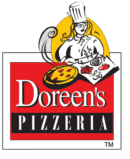Junk food is available all throughout the world in different shapes and sizes; you see it almost everywhere—in supermarkets and convenience stores, fast-food restaurants, on the internet. What makes it so enticing?
Junk food refers to foods that are high in calories but low in nutritional content. Of course, the definition of junk food varies depending on who you ask. For instance, some may consider a Chicago stuffed pizza junk food. However, it doesn’t quite fit the said food group because it contains real food with nutrients such as cheese and tomato sauce.
Think about this: When you combine a whole-wheat or partially whole-wheat crust with vegetables as a topping, pizza is no longer considered junk food.
So do you want to know more about the healthy aspects of pizza? Read along to find out.
What Nutrients Can Be Found In Pizza?
The nutritional value of the topping is highly dependent on the ingredients. Pizza is a complete meal, containing carbs, proteins, vitamins, and lipids. A typical portion has roughly 300 calories. About 815 calories are in a basic Margherita with tomato and mozzarella. The marinara pizza is the least caloric, containing around 720 calories, while the four cheese pizza contains around 990 calories.
While it’s true that many types of pizza are rich in calories, fat, and sodium, those made with fresh, whole ingredients can be a healthy addition to anyone’s diet. Traditional-style pizza is made using wheat, yeast, water, salt, oil, tomato sauce, and fresh cheese. Pizza made from home with just a few ingredients can be quite nutritious too.
Experimenting with Healthy Toppings for Your Pizza
While many types of pizza are rich in calories, salt, and carbohydrates, those produced at home or in a pizzeria can be made healthier by using nutrient-dense toppings or whole-grain crusts. When creating homemade pizza, add nutritious toppings like veggies or grilled chicken and other lean protein sources to improve the nutritional value. Many pizza restaurants offer whole-wheat and gluten-free crusts and healthy toppings like fresh veggies and herbs.
Enjoying Pizza to the Fullest without Feeling Guilty
Moderation is key. Indulging in your favorite foods every now and then is part of a healthy eating plan. While it’s fine to consume a frozen, fast-food, or pizzeria-style pizza, it’s preferable to limit your consumption to a few times each month.
Want to Make Sure Your Dish Is on the Healthier Side? Make Your Own Pizza!
There are methods to make this delicious dish a whole lot healthier for true pizza fans who want to eat it more frequently. You can’t always know what goes into the recipe when you buy a frozen pizza or one from a fast-food restaurant. On the other hand, a DIY allows you to choose what goes into your pizza and what doesn’t.
To increase fiber content, make your own crust with healthy ingredients like whole-grain or gluten-free flours. You can also use cauliflower or nut flour to make a grain-free crust.
You can add unsweetened sauce, high-quality cheese, and healthy toppings such as peppers, sundried tomatoes, broccoli, arugula, chicken, garlic, or mushrooms to your pizza.
Conclusion
When preparing your own pizza or buying one, examine the ingredient lists of products and make a point of purchasing only those that contain whole-food ingredients. Be careful to avoid artificial colors, high-fructose corn syrup, added sugar, processed meats, and artificial preservatives in crust mixes or pre-made pizzas.
Get the best pizza in Indiana by ordering your faces at Doreen’s Pizzeria! Our pizza restaurant offers delivery, carry out, dine-in, and catering options. Have a piece of pizza now!


